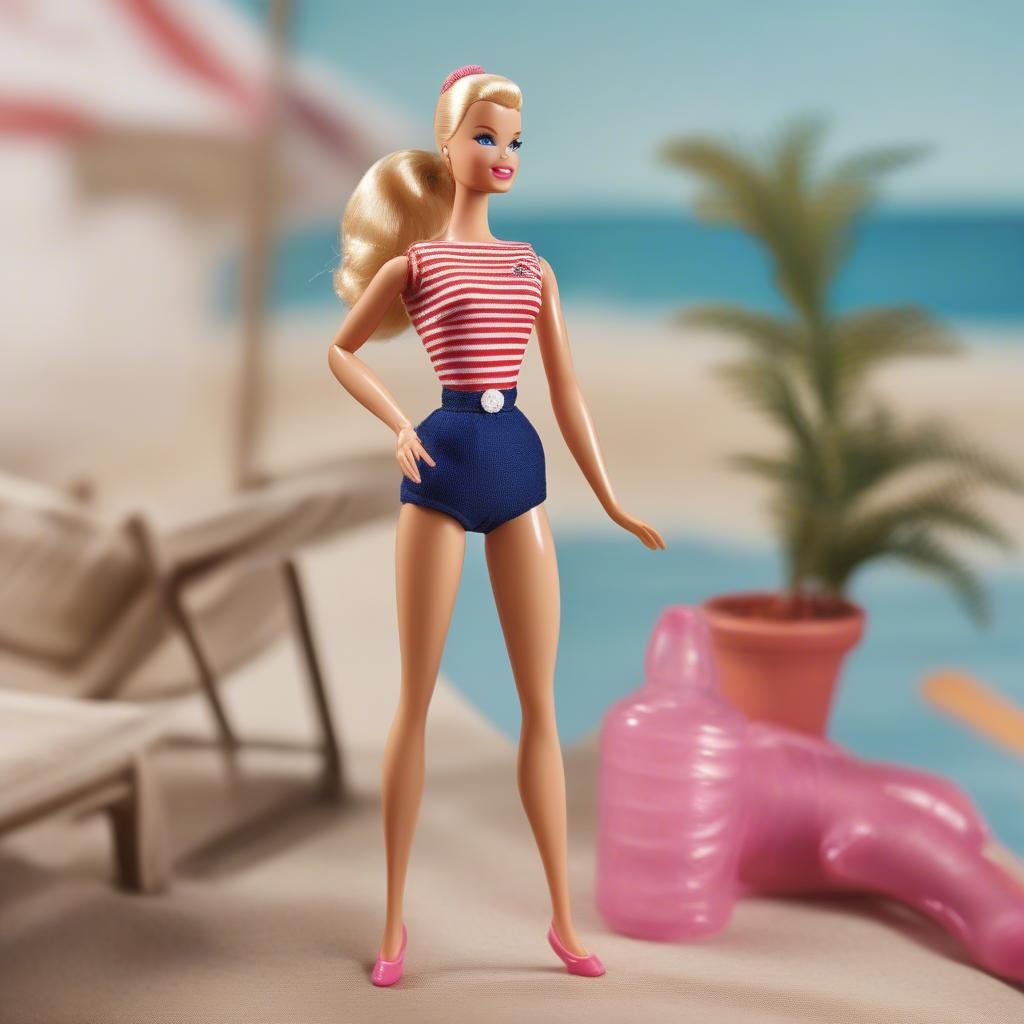
Ruth Handler, co-founder of Mattel, is the woman Who Created Barbie Dolls. Inspired by her daughter Barbara’s fascination with paper dolls depicting adult roles, Handler envisioned a three-dimensional doll that would allow girls to imagine their futures. In 1959, Barbie Millicent Roberts made her debut at the American International Toy Fair in New York, forever changing the landscape of the toy industry.
Table Content:
- The Inspiration Behind Barbie: A Mother’s Observation
- From Bild Lilli to Barbie: A Controversial Start
- The Evolution of Barbie: Reflecting Changing Times
- Barbie’s Cultural Impact: More Than Just a Toy
- The Legacy of Ruth Handler: A Visionary Entrepreneur
- Barbie in the 21st Century: Embracing Diversity and Inclusion
- Conclusion: Barbie’s Enduring Appeal
- FAQ
The Inspiration Behind Barbie: A Mother’s Observation
Handler observed that Barbara and her friends enjoyed playing with paper dolls that portrayed adult roles, such as fashion models, actresses, and mothers. Existing baby dolls offered limited play options, primarily focused on nurturing. Recognizing this gap, Handler envisioned a doll that would inspire young girls to dream big and explore various career paths and lifestyles. This insight became the genesis of the iconic Barbie doll.
From Bild Lilli to Barbie: A Controversial Start
Barbie’s design wasn’t entirely original. Handler drew inspiration from a German doll called Bild Lilli, a fashion doll marketed to adults. While Bild Lilli served as a visual starting point, Handler transformed her into a toy that resonated with young girls, embodying aspiration and possibility. This adaptation, however, initially drew criticism due to Barbie’s adult-like figure.
The Evolution of Barbie: Reflecting Changing Times
Over the decades, Barbie has evolved significantly, reflecting changing social norms, fashion trends, and career aspirations. From astronaut Barbie to doctor Barbie, the doll has embraced a diverse range of professions, empowering girls to imagine themselves in various roles. Barbie’s evolution has not been without controversy, with criticisms regarding body image and representation. However, Mattel has continuously strived to make Barbie more inclusive and reflective of a diverse world.
Barbie’s Cultural Impact: More Than Just a Toy
Barbie has become a global cultural icon, transcending her status as a mere toy. She has inspired countless children, been featured in films and television shows, and has become a collectible item for enthusiasts worldwide. Barbie’s impact extends beyond the toy industry, sparking conversations about gender roles, body image, and consumer culture.
The Legacy of Ruth Handler: A Visionary Entrepreneur
Ruth Handler’s creation has left an indelible mark on popular culture. Her vision of a doll that empowered girls to dream beyond traditional roles revolutionized the toy industry and continues to inspire generations. Barbie’s enduring popularity is a testament to Handler’s entrepreneurial spirit and her understanding of children’s aspirations.
 Ruth Handler with Barbie Dolls
Ruth Handler with Barbie Dolls
Barbie in the 21st Century: Embracing Diversity and Inclusion
In recent years, Mattel has made significant efforts to diversify the Barbie line, introducing dolls with different body types, skin tones, and hairstyles. This commitment to inclusivity reflects a broader societal shift towards greater representation and acceptance. Barbie continues to evolve, remaining relevant and inspiring for a new generation of children.
Conclusion: Barbie’s Enduring Appeal
From her inception in 1959, Barbie, created by Ruth Handler, has become more than just a doll; she’s a cultural phenomenon. While her journey has been marked by both celebration and controversy, Barbie’s enduring appeal lies in her ability to adapt and reflect evolving societal values. She continues to inspire imagination and empower children to dream big, ensuring that Barbie’s legacy will endure for generations to come.
FAQ
When was the first Barbie doll created? The first Barbie doll was introduced in 1959.
What was the inspiration behind Barbie’s creation? Ruth Handler was inspired by her daughter Barbara’s enjoyment of playing with adult-themed paper dolls.
What was the name of the German doll that inspired Barbie’s design? Bild Lilli, a German fashion doll, served as the inspiration for Barbie’s design.
How has Barbie evolved over the years? Barbie has evolved to reflect changing social norms, fashion trends, and career aspirations, embracing diversity and inclusion.
Why is Barbie considered a cultural icon? Barbie’s impact extends beyond the toy industry, sparking conversations about gender roles, body image, and consumer culture. She has inspired countless children and become a collectible item worldwide.
Who created Barbie? Ruth Handler, co-founder of Mattel, created Barbie.
What is Barbie’s full name? Barbie’s full name is Barbie Millicent Roberts.
